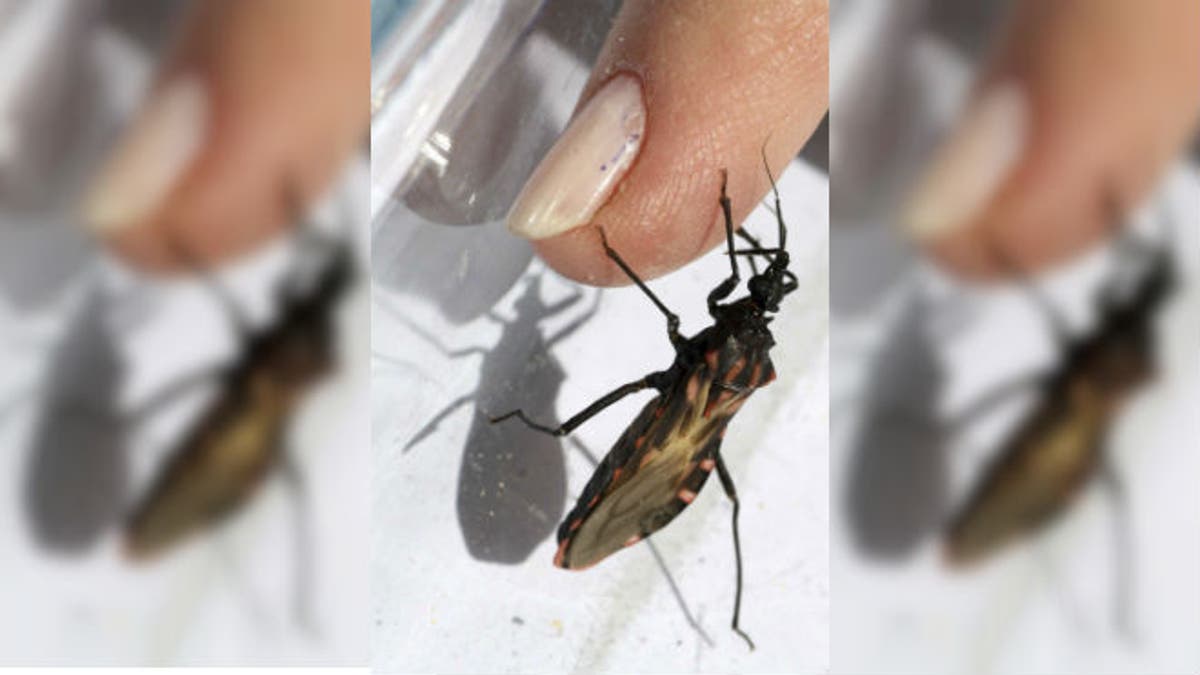
A Panstrongylus megistus insect crawls on a finger in the Argentine province of Corrientes in this picture taken September 16, 2008. This bug, commonly known as Vinchuca in many rural areas spreads Chagas, a disease that originated in Latin America, is endemic to Argentina and has killed some 50,000 people worldwide. REUTERS/German Pomar (ARGENTINA)
Chagas disease— also known as American trypanosomiasis— is caused by the parasite Trypanosoma cruzi. The potentially life-threatening disease is found mainly in Latin America and is spread to people by the feces of triatomine bugs, sometimes known as ‘kissing bugs,’ because they tend to feed on people’s faces. The infected bugs— which contract the disease from an infected animal or person—hide in the crevices in walls and roofs of homes made of materials such as mud, adobe, straw, and palm thatch. At night, they emerge and, once they’ve bitten and ingested blood, defecate on the person, who then becomes infected as parasites enter the body through mucous membranes or breaks in the skin, according to the Centers for Disease Control and Prevention (CDC).
The CDC estimates that as many as 8 million people in Mexico, Central America and South America have Chagas disease— and most don’t know they’re infected.
What are the symptoms?
There are two phases to the presentation of Chagas: the initial, acute phase and the chronic phase, both of which can be symptom-free or life-threatening.
During the acute phase of the first few weeks or months of infection, there are a high number of parasites circulating in the blood. Symptoms are absent or mild in most cases, but can include fever, headache, fatigue, diarrhea, vomiting, enlarged lymph glands, pallor, muscle pain, difficulty breathing, swelling and abdominal or chest pain, according to the CDC and the World Health Organization (WHO). A skin lesion or purplish swelling of the lids in one eye are characteristic first visible signs for less than 50 percent of people bitten by the triatomine bugs.
Symptoms usually fade away on their own within a few months or weeks, but if left untreated, the infection will persist, the CDC says.
According to the WHO, up to 30 percent of chronically infected people develop cardiac alterations and up to 10 percent develop digestive, neurological or mixed alterations that may require specific treatment. In the chronic phase, parasites are mostly hidden in the heart and digestive muscle.
Eventually, the infection can lead to sudden death or heart failure caused by progressive destruction of the heart muscle.
How is it treated?
Benznidazole and nifurtimox are 100 percent effective in killing the parasite and curing the disease, but only if given soon after infection at the onset of the acute phase, according to the WHO.
But the longer a person has been infected, the less effective each treatment is.
A Chagas patient suffering from cardiac or intestinal problems may require symptomatic treatment such as a pacemaker.
There is no vaccine for Chagas disease.
Who is at risk?
Chagas is not transmitted from person-to-person or with casual contact with infected people or animals, the CDC says. However, people can be infected through congenital transmission, blood transfusion, organ transplantation, consumption of uncooked food contaminated with feces from infected bugs, and accidental laboratory exposure.
According to the CDC, travelers who sleep in well-constructed facilities are at low risk for exposure to triatomine bugs. According to the WHO, vector control is the most effective prevention method in Latin America. This can include: spraying of houses and surrounding areas with residual insecticides, personal preventative measures such as bednets and good hygiene practices in food preparation, transportation, storage and consumption.
